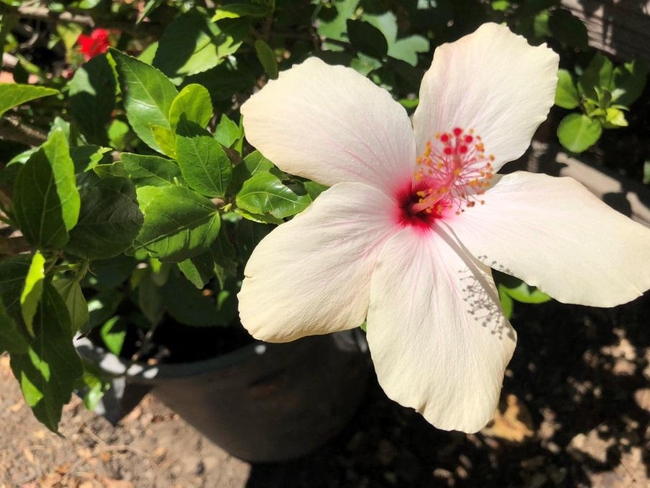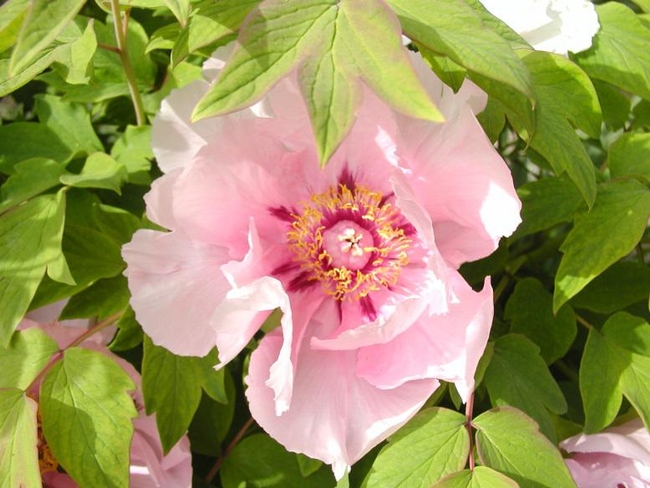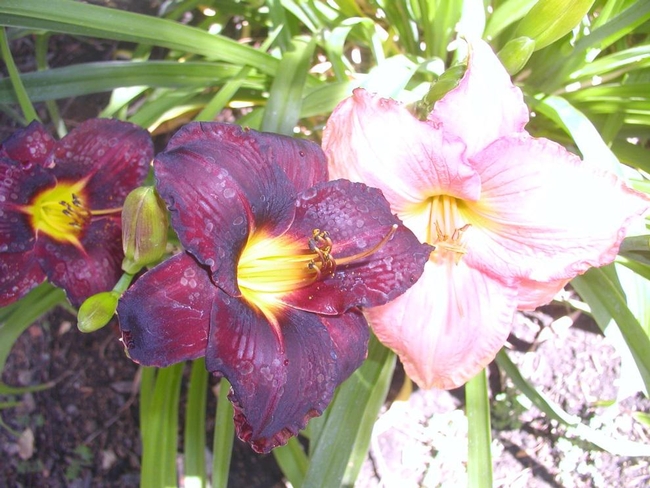PERENNIAL SHRUB: Chinese hibiscus or tropical hibiscus. This is a gorgeous flowering shrub that will provide large beautiful blooms all summer and fall. There are over 200 species but the pretty variety you want goes by the name Hibiscus rosa-sinensis. Some varieties can produce 12 inch diameter blooms but 4-6 inches is more common. It is cold sensitive so it is best grown in containers so it can be moved in the cold season to a protected area or greenhouse. Its only demand is to be watered fairly often with lots of sun and fertilizer. It does not mind having roots crowded and I have had two of these in the same pots for about 20 years and they bloom each year without fail. One of these is white, see my photo, and the other is red but they come in shades of red, pink, yellow, and orange. There are also purple, lavender-blue, and bicolor varieties. I also have not fertilized the pot other than adding a little compost each spring. They should be pruned occasionally to promote bushiness and new growth, see video.
PERENNIAL SUBSHRUB: Tree Peonie (Paeonia suffruticosa). Tree peonies are deciduous sub-shrubs that bloom for a week to 10 days in mid to late spring with big, fragrant peony flowers. Tree as inferred in this name is certainly a misnomer. They can grow to 5 feet high by 5 feet wide more like a large shrub, definitely not a tree, but it does differentiate them from herbaceous peonies. The frilly flowers are much like those of herbaceous peonie, Paeonia lactiflora, but larger. If you love peony flowers, tree peonies might be a good choice. The flower colors are white, red, pink, purple and yellow. Following bloom the green-leaved shrubs can provide an attractive backdrop for other plants. I had several at my former home and I will soon plant new ones I purchased on line for my new home. At my last home I dug up an older one which was not getting enough sun and moved it successfully in the winter time. Older ones can also be divided in the winter to multiply the beauty. I also saved seeds but successful growing them from seeds is a challenge that I never got around to. Recently I did dig up some seedlings from a friend's home, but alas none survived. Consequently, I ordered some on line and the good news is they will bloom much sooner than the lost seedlings. For more information on growing, caring for and pruning tree peonies, visit the Spruce.com website.
A dark purple and a light pink daylily at my home in Morada.





